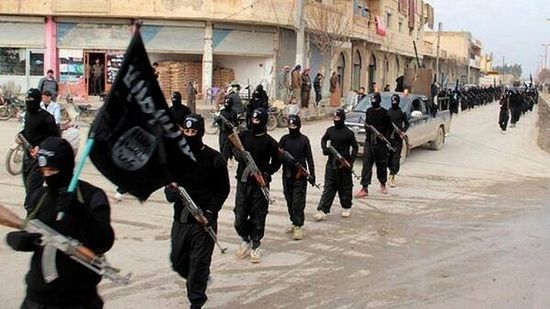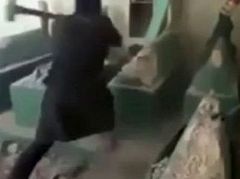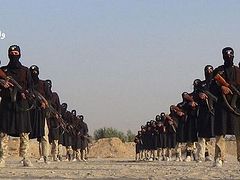Source: ThinkProgress
By Jack Jenkins
Last week, members of the Islamic State of Iraq and al-Sham (ISIS), the ruthless militant group currently marauding through Iraq, reportedly blew up the tomb of the Prophet Yunus. The burial site of Yunus, commonly known to many Christians as the biblical figure Jonah, was located in the modern-day city of Mosul (once the biblical city of Nineveh), and was seen by many archeologists and religious scholars as an ancient — and precious — religious artifact. Now, reports indicate, it is little more than rubble.
It would be easy to cast this latest act of cultural violence as another example of ISIS attacking Christians — a group that has no doubt endured harsh and at times horrific treatment under ISIS rule. Some, such as Sam Hardy, a professor at the American University of Rome, immediately made this connection, telling the Washington Post that ISIS could potentially destroy “Basically pretty much anything in the Bible.”
But the destruction of Jonah’s shrine is actually a bit more complicated than singling out one religious tradition. For starters, the Jonah story isn’t exclusive to Christianity. Jews also revere the prophet, as do Muslims: there is an entire book of the Qur’an, aptly titled “Jonah,” dedicated to the prophet, and the Muslim prophet Muhammad is said to have declared, “One should not say that I am better than Jonah.”
It is for this reason that representatives from multiple religious traditions — not just Christians — lamented the loss of the shrine. Joel S. Baden and Candida Moss — both professors of biblical scripture at Yale Divinity School and the University of Notre Dame, respectively — wrote in CNN’s Belief Blog that the explosion was “an attack on both those Christians living in Iraq today and on the rich, if little-known, Christian heritage of the region.” Similarly, Rabbi Benjamin Blech, a Talmud professor at Yeshiva University in New York, co-authored a piece for the Wall Street Journal mourning the destruction of the shrine, saying, “The desecration of Jonah’s final resting place is a blow not only to his memory but more tragically to his message of universal concern for those of all faiths, the message that still remains the only hope for civilized mankind.”
Various Muslims — including locals in Mosul — also condemned the destruction, as did Harith al-Dhari, a Sunni preacher living in Lebanon who is said to be sympathetic to militants in Iraq.
“[Iraq’s Committee of Muslim Scholars] would like to underline the huge loss for the people of Mosul, who saw these blessed mosques as landmarks of the city, a part of its culture and history,” Dhari told The Daily Star.
So if blowing up Jonah’s shrine makes pretty much everyone equally angry, why did ISIS do it? The answer lies in ISIS’s peculiarly “orthodox” — and destructive — theology, which, among other things, abhors all religious shrines because they are seen as a form of idolatry, or shirk. This is par for the course for certain strains of Salafi movements like ISIS, which seek a radical return to their understanding of how the earliest Muslims (or Salaf) lived. These Salafi movements have destroyed tombs before: Some extremists attacked the tombs of Sufi Muslim leaders in 2011, and when Salafis took over Saudi Arabis in the late 1700s and earlier 1800s, they demolished several tombs that belonged to the Prophet Muhammad’s companions and family members (they left Muhammad’s tomb alone, however).
ISIS used this history to defend their tactics earlier this week, saying, “Our pious predecessors have done so … There is no debate on the legitimacy of demolishing or removing those graves and shrines.”
As Mark Movsesian points out over at First Things, “one should see ISIS’s destruction of the tomb of Jonah as an act principally directed at other Muslims, not Christians.” What’s more, ISIS’s attack on multiple religions might have more wide-ranging impact than they expect — especially among their fellow Muslims. When ISIS destroyed the tomb, they reportedly forgot to remove copies of the Qur’an and other holy books from the building. Locals found the damaged books while walking through the rubble, a move so offensive to Muslims that it has allegedly sparked what could be the early stages of localized resistance against ISIS within Mosul.





